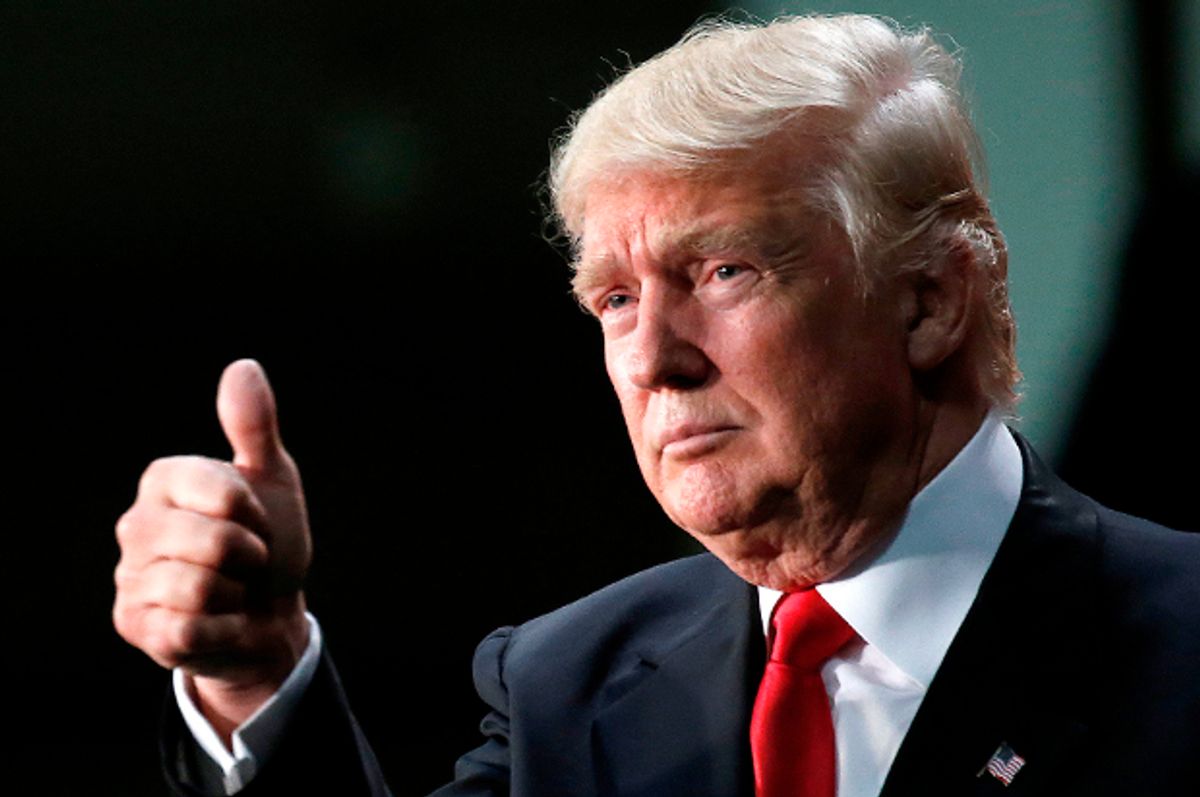This piece originally appeared on BillMoyers.com.
In a speech outlining his plan to “jump-start” the economy last week, Donald Trump unveiled new proposals that would dramatically cut taxes. It would be, he said, the “biggest tax revolution since the Reagan tax reform, which unleashed years of continued economic growth and job creation.”
The man who wrote the manifesto for the Reagan revolution, Bruce Bartlett, wrote in a New York Times op-ed that the tax cuts Trump has proposed are “not the medicine the economy needs.”
Trump’s proposal, which is based on the House Republicans’ tax plan, would reduce income taxes on all Americans, but would especially benefit the rich as the highest tax rate would be cut to 33 percent from 39.6 percent right now. An analysis of the House Republicans’ tax plan by the Tax Foundation found that after-tax income for the richest 1 percent of Americans would increase by 5.3 percent at the reduced tax rate.
While Trump’s new tax cuts are less severe than those he originally proposed, the plan is still likely to “add substantially to the debt,” according to the Committee for a Responsible Federal Budget (CRFB). They estimated his preliminary tax plan would cost roughly $9.25 trillion over the course of a decade. In the coming weeks, CRFB said it will release new estimates based on Trump’s new tax plan, which would also slash corporate taxes from 35 percent to 15 percent and wipe out estate taxes.
The GOP nominee has not yet explained how he would pay for these cuts (Trump calls himself the “king of debt,” so we shall see), which would cut government revenues at a time when the cost of benefit programs, led by Social Security and Medicare, are on the rise as Baby Boomers leave the workforce.
In his op-ed, Bartlett lays out why the 1981 Reagan tax law that he helped design made sense at the time, but not so today. He writes:
Tax rates were very high when Reagan proposed cutting them — much higher than today. The high tax rates from the World War II era had been only partly cut by John F. Kennedy, and the top income-tax rate was 70 percent. Inflation was pushing workers into higher tax brackets when they received cost-of-living pay raises.
According to the Tax Policy Center, the average federal income-tax rate on a family of four with the median income rose from 9.1 percent in 1972 to 11.8 percent in 1981. The marginal tax rate — the tax on the last dollar earned — rose from 19 percent to 24 percent in the same period.
By contrast, the average tax rate on the median family in 2014 was just 5.3 percent, and the marginal rate was 15 percent. Inflation is nonexistent, and no one is being pushed into higher tax brackets by it. In short, taxes were too high in 1981 and needed to be cut — including for the rich.
Bartlett goes on to explain why the Reagan tax cut played “only a secondary role in the 1980s boom,” which he says wasn’t actually “much of a boom” at all and reminds us that “Reagan cared about deficits” and supported a number of tax increases during his tenure, taking back half of the 1981 tax cut.
In this clip from his 2012 interview with Bill Moyers, Bartlett — who served as a senior policy analyst to Reagan and a top treasury official to President George H.W. Bush — talks about the negative short- and long-term impacts of lowering taxes under the two presidents, as well as the “600 pound gorilla” in the debate.
When asked about the newly announced Trump tax plan and the deficit, Bartlett told us by email that all Republican tax cuts “are designed to lose revenue” and “create deficits,” despite any statements made to the contrary.
“Then when deficits emerge, they must always be dealt with only by cutting spending,” Bartlett writes. “If tax increases are necessary they will be in the form of sales taxes paid largely by the poor.”
He points to Kansas as a textbook case of just that. Last year, Kansas increased its sales tax to 6.5 percent from 6.15 percent — which are applied to groceries in the state — and raised cigarette taxes to help avert a deficit, which resulted in part from cutting income taxes. (In some magical speaking, Gov. Sam Brownback denied that the tax increases were actually tax increases, but that’s another story.) So why were income taxes cut in the first place?
Brownback slashed personal income taxes after he was elected in 2011 on the promise that the deep cuts would be the “shot of adrenaline” the state’s economy needed.
It hasn’t worked and “the state budget has been in crisis ever since,” writes the Associated Press. This led the governor to reduce funding to universities, delay contributions to pensions for school teachers and community college employees and reallocate by $750 million funds originally allocated for highway projects.



Shares